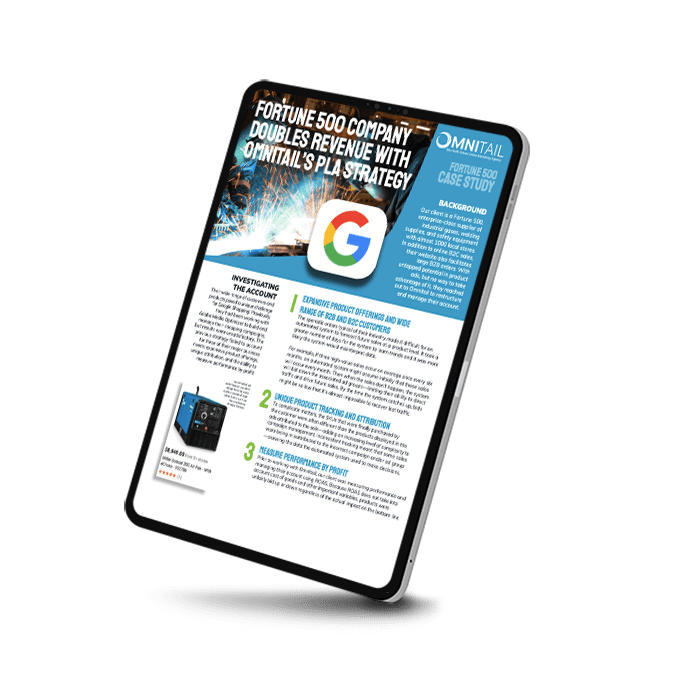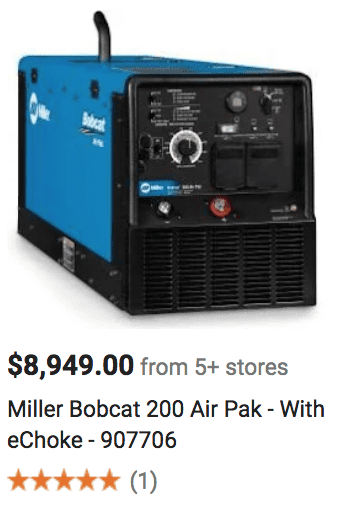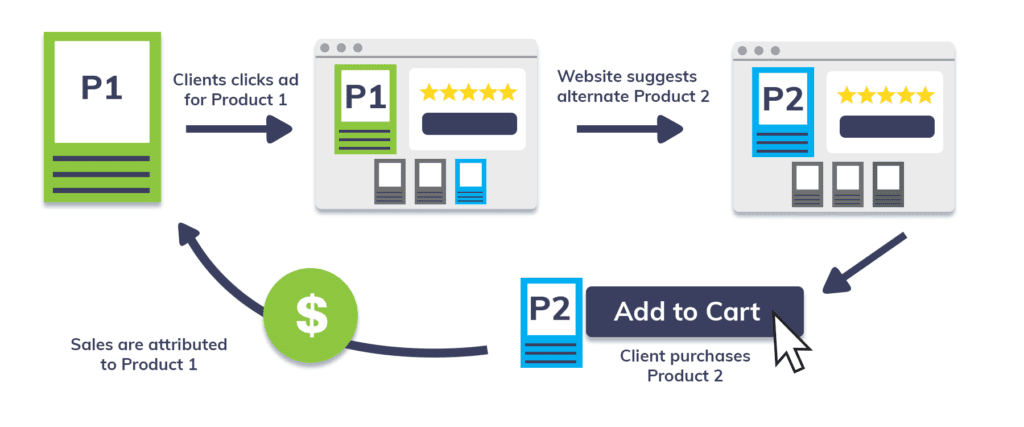
BACKGROUND
Our client is a Fortune 500, enterprise-class supplier of industrial gases, welding supplies, and safety equipment with almost 1000 local stores. In addition to online B2C sales, their website also facilitates large B2B orders. With untapped potential in product ads, but no way to take advantage of it, they reached out to Omnitail to restructure and manage their account.

2x+
Increase in Monthly Revenue
Year/Year
130%
Increase in Orders in
3 Month Period After Takeover
6x
Increase in Profit Run Rate
Year/Year
INVESTIGATING
THE ACCOUNT
Their wide range of customers and products posed a unique challenge for Google Shopping. Previously, they had been working with Adobe Media Optimizer to build and manage their shopping campaigns, but the results were unsatisfactory.
The previous strategy failed to account for three of their major business needs: expansive product offerings, unique attribution, and the ability to measure performance by profit.
1. Expansive Product Offerings and Wide Range of B2B and B2C Customers
The sporadic orders typical of their industry made it difficult for an automated system to forecast future sales at a product level. It took a greater number of days for the system to learn trends, and it was more likely the system would misinterpret data. For example, if three high-value sales occur on average once every six months, an automated system might assume initially that these sales will occur every month. Then, when the sales don’t happen, the system will bid down the associated ad groups—limiting their ability to direct traffic and drive future sales. By the time the system catches up, bids might be so low that it’s almost impossible to recover lost traffic.
2. Unique Product Tracking and Attribution
To complicate matters, the SKUs that were finally purchased by the customer were often different than the products displayed in the ads attributed to the sale—adding an increasing level of complexity to campaign management. Inconsistent tracking meant that some sales were being misattributed to the incorrect campaign and/or ad group —skewing the data the automated system used to make decisions.
3. Measure Performance with Profit
Prior to working with Omnitail, our client was measuring performance and managing their account using ROAS. Because ROAS does not take into account cost of goods and other important variables, products were unfairly bid up or down regardless of the actual impact on the bottom line.
Omnitail's Advertising Strategy
Our approach to account management was two fold: improving campaign management and bidding across all products according to our client’s business needs, and recreating the tracking and attribution of the account to ensure we were providing accurate, actionable insights.
Improving Management and Bidding
Where Adobe Media Optimizer had struggled to keep up with the unique purchase behavior of our client’s customers, our in-house tools coupled with the oversight of an expert analyst proved more than up to the task. Ad groups were closely monitored to ensure bids remained high enough to drive traffic even if sales were infrequent. This ensured that a long sales cycle didn’t have an unfairly negative impact.
Managing according to the performance of the products purchased as opposed to those advertised also allowed us to identify areas of the account where ad spend was being misdirected and reassign that spend.

typical of high value items such as the one above.

Tracking Performance
with Custom Metrics
To successfully track product performance, however, we needed to adapt to our client’s existing business initiatives. We built a custom metric strategy for measuring profit that accounted for both traditional retail pricing as well as custom enterprise pricing—which comprises a significant portion of this client’s business. Working in tandem with their native attribution software also allowed us to tailor KPIs to the metrics the team was already tracking in-house. We were then able to validate shifts in revenue type, and determine if these shifts indicated a change in performance or merely a change in attribution.
RESULTS
In the first three months after we took over the account, revenue attributable to the program grew 294%. Furthermore, a major increase in orders drove a 6x increase in profit.
Perhaps the most meaningful improvement, though, was the increased ability of the client to accurately track ad spend and product performance, giving them the ability to make intelligent decisions about marketing goals with profit in mind.






